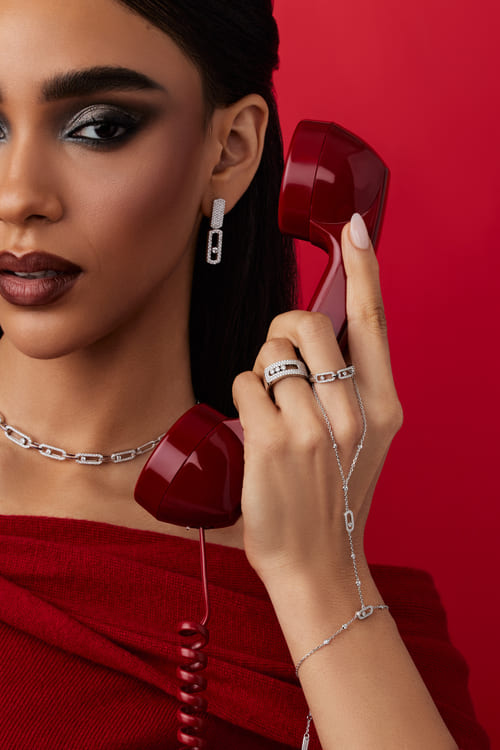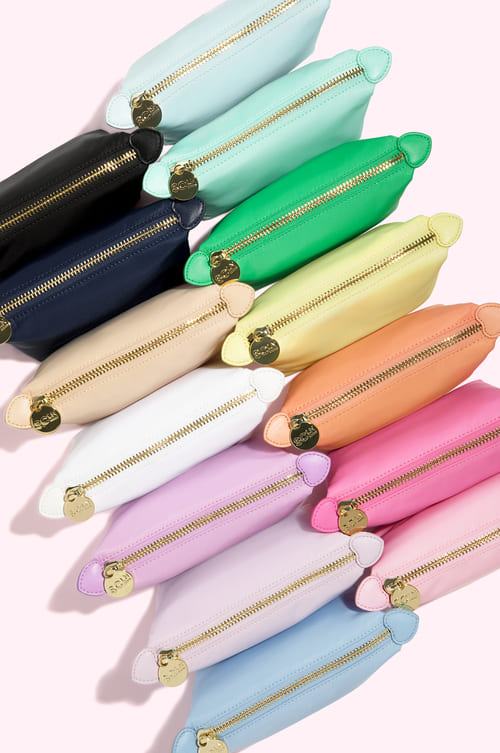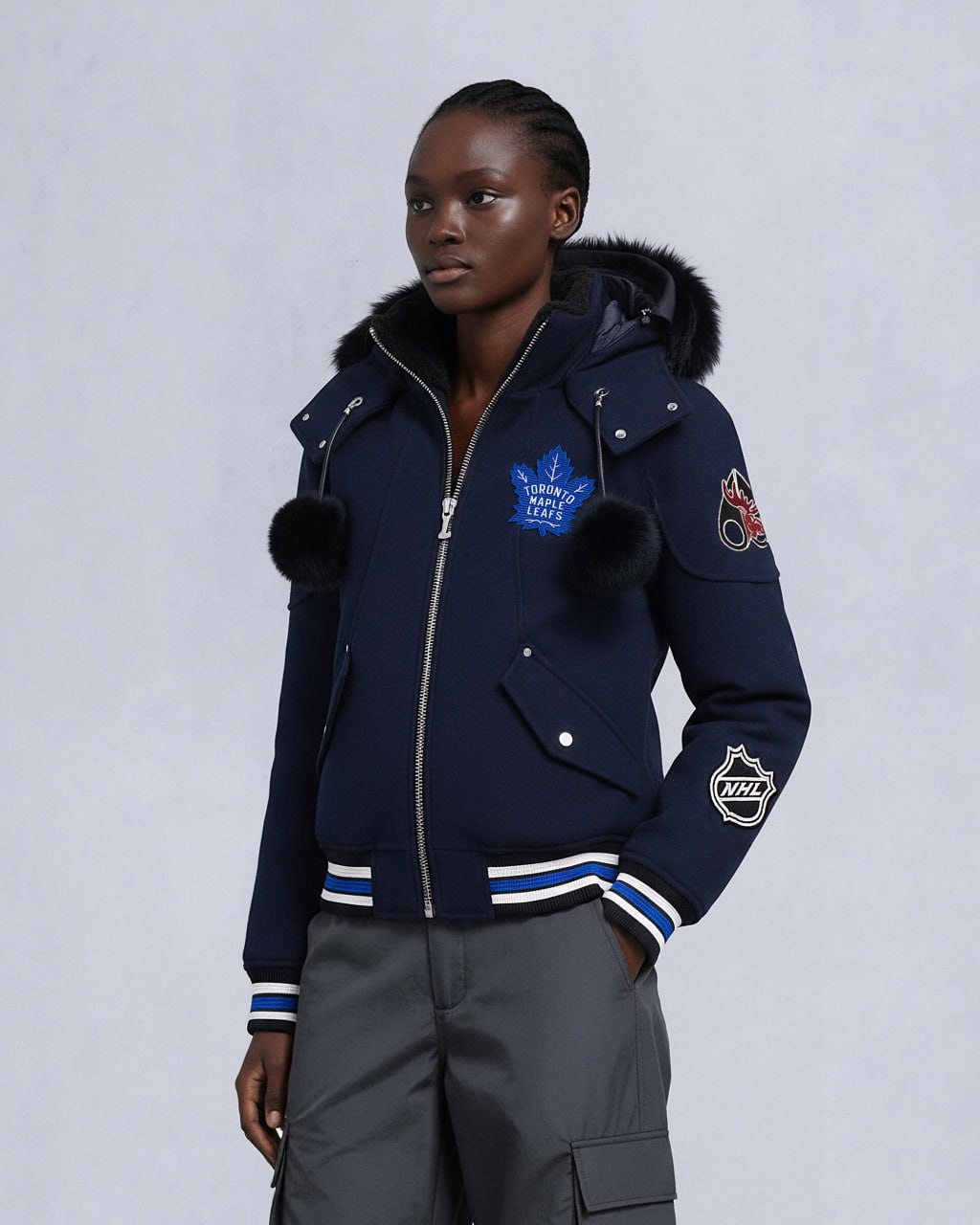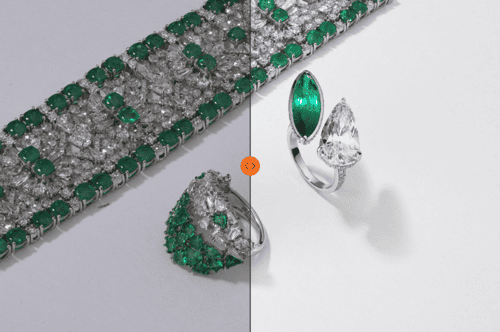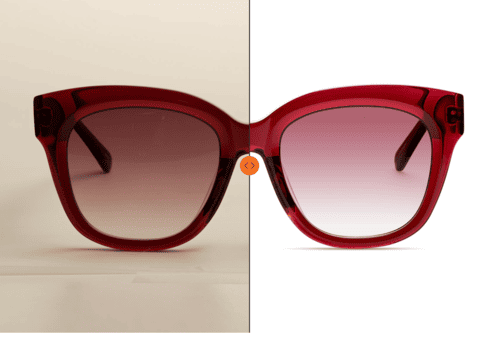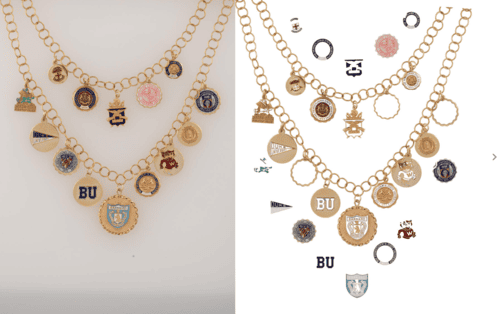10 Trends of eCommerce Visual Content You Need to Know
In the fast-paced world of eCommerce, one thing remains constant: change. As brands strive to captivate their customers in an increasingly digital environment, staying ahead of trends in visual content has never been more critical. From cutting-edge technologies like AI and CGI to creative approaches like editorial storytelling, these trends are redefining how products are presented and consumed.

How Technology is Revolutionizing eCommerce Photography
Technology has dramatically transformed eCommerce photography, making it faster, higher quality, and more scalable. High-resolution imaging, 3D product visualization, and virtual try-ons are no longer luxuries — they’re expectations.
End-consumers demand visuals that bridge the gap between in-store and online shopping. Whether it’s zooming into intricate product details or virtually trying on a pair of sunglasses, brands that embrace tech innovation are winning big.
#1 AI in Product Photography: A Game Changer or Just A Hype?

Artificial Intelligence (AI) is revolutionizing product photography. Tools for automated retouching, background removal, and lighting adjustments are saving time and enhancing consistency. Platforms like Adobe Photoshop’s AI-powered tools are already leading the charge.
However, while AI can streamline workflows, it’s no replacement for human creativity. The best results come from blending AI’s precision with a photographer’s unique vision. While AI has the power to streamline workflows and automate repetitive tasks, it’s important to recognize its limitations. AI can analyze data and predict trends, but it can’t feel emotion or understand context in the way a human mind can.
It’s like having an incredibly skilled assistant who executes the technical details flawlessly, but you need to guide. This balance ensures productivity and accurate output.
#2 The Role of Automation in Photography Workflows
Automation is becoming the backbone of bulk eCommerce catalog management. Automated setups now handle everything from capturing thousands of product photos to tagging and categorizing them for easy access. The benefits? Faster production, reduced time-to-market, and the ability to scale effortlessly — even for brands with expansive SKUs.
When it comes to managing vast amounts of visual content for eCommerce, cloud-based solutions like LenFlash’s platform are becoming the gold standard. At the heart of this transformation is Digital Asset Management (DAM) — a system designed to streamline how brands store, organize, and utilize their visual assets. Combine this with AI driven automation, and you have a game-changing approach to handling the ever-growing demands of eCommerce.
#3 How CGI is Shaping the Future of Visual Content

In the world of eCommerce, where visual content drives purchasing decisions, Computer-Generated Imagery (CGI) is a transformative force. This technology is reshaping how brands create, deliver, and optimize product visuals, offering both creative flexibility and cost efficiency. Let’s dive deeper into how CGI is revolutionizing eCommerce visual content and what it means for the future of photography.
CGI involves the use of computer graphics to create hyper-realistic images, entirely rendered in a virtual environment. Unlike traditional photography, CGI doesn’t require a physical product or photoshoot location. Instead, it combines 3D modeling, texturing, and rendering techniques to produce visuals that are virtually indistinguishable from real-life photographs.
Think about the sheer convenience. You don’t need to ship products to a studio, book models, or spend hours setting up the perfect shot. With CGI, everything happens in a digital space. You can tweak the lighting, change the background, switch the color of a product, or even showcase multiple variations of the same item without lifting anything heavier than a mouse. It’s like having an unlimited creative toolbox, ready to go whenever inspiration strikes — or when there is a need for last-minute changes (and we all know how often that happens).
What’s next for CGI? Honestly, the possibilities are endless. Real-time rendering is speeding up production times, virtual influencers are becoming a thing (yes, completely CGI-generated personalities are “posing” for brands), and AR is bridging the gap between online and in-store shopping. It’s an exciting time to be in the visual content space because CGI is rewriting the rules. If you’re not exploring CGI yet, now’s the time to consider this option.
#4 Editorial Storytelling Trend for ECommerce
Editorial storytelling is where eCommerce is getting a serious glow-up. Today’s consumers want to feel something when they see a product — they want to imagine it in their lives, in their world, and in their story. That’s why brands are leaning into narrative-driven campaigns that blur the line between high fashion editorials and straightforward product photography.
Maybe it’s styled with a chic trench coat on a cobblestone street or paired with casual jeans at a café. These aren’t just product shots anymore — they’re mini-stories that make the viewer think, I want to be that person. It’s aspirational but still feels grounded in reality, and that’s where the magic happens.
Editorial storytelling taps into deeper feelings — nostalgia, adventure, comfort, or even rebellion. Instead of focusing solely on features, it’s about capturing the lifestyle the product represents. That sweater isn’t just warm; it’s the one you’ll wear on cozy mornings with coffee by the window. That backpack isn’t just practical; it’s the one that will accompany you on your next great adventure. This approach is about creating a vibe, a mood, a world that customers want to step into.
So, if you’re still relying only on static, plain product shots, it might be time to rethink your strategy. Customers today shop for stories. And the brands that can tell the most compelling stories? Those are the ones winning hearts — and shopping carts.



#5 A Celebration of Diversity and Inclusion in On-Model Commercial Photography
For years, the fashion and eCommerce industries were dominated by a narrow definition of beauty, but that’s changing. Today, brands are celebrating representation in all its forms, creating visuals that reflect the real world and resonate with a much broader audience.
Body positivity is front and center, and it’s about time. Models with a range of body types are finally being celebrated, showing customers that beauty comes in all shapes and sizes. And it’s not just about appearance; representation is extending into neurodiversity and disability. Seeing neurodivergent models or those with disabilities featured prominently in campaigns is empowering. It sends a powerful message: everyone deserves to see themselves reflected in the brands they love.
Cultural authenticity is another huge shift. Gone are the days when tokenism — checking a box for diversity without real representation — was enough. Brands are now working closely with diverse communities to ensure their campaigns are genuine. This means respecting traditions, showcasing real stories, and ensuring that representation goes deeper than just the surface. It’s not about putting someone in a campaign to look inclusive; it’s about actually being inclusive.
And let’s cover a realistic approach. eCommerce photography has long been about the polished, picture-perfect look, but that’s evolving. Customers want to see models who look like them. It’s about bridging the gap between aspirational and wearable, making fashion feel accessible and grounded in real life.
This shift toward diversity, inclusion, and authenticity is good business. When people see themselves represented in a brand’s visuals, it builds trust, loyalty, and emotional connection.
#6 Creativity in Color-Grading For Such Genres As Still Life, Lifestyle, and Editorial

Color grading has become a superpower in eCommerce, taking visuals from “nice” to absolutely unforgettable. It’s about creating a feeling, a vibe, a mood that sticks with people long after they’ve scrolled past. And at the heart of this transformation is the rise of cinematic color grading — a trend that’s changing the way brands approach creative genres of ecommerce visual content.
Cinematic color grading, traditionally reserved for film, is now making significant inroads into e-commerce photography. By applying film-inspired color palettes and tonal adjustments, photographers create images that resonate on an emotional level, elevating product presentation beyond mere display to an evocative experience.
Picture this: a campaign for a luxury home scent uses warm, golden tones that make you feel like you’re wrapped into this scent on a crisp and cozy autumn evening. Or imagine sleek, icy blues in a tech ad that screams innovation and future-forward thinking. These color choices aren’t random — they’re carefully crafted to evoke emotion and bring a brand’s story to life.
Still-life visuals, for example, can feel completely reimagined through color. A matte lipstick shown in deep, velvety reds suddenly exudes sophistication, while a clean skincare line might pop against airy, pastel hues that whisper freshness and calm. These product images make you pause, feel something, and remember the brand.
And when it comes to lifestyle or editorial visuals? The possibilities are endless. A cozy winter fashion campaign might lean into soft, muted tones that feel like sipping hot cocoa (or Jägermeister) by the fire in the Alps. On the flip side, a bold, high-energy fitness shoot could crank up the saturation with vibrant neons that practically burst with energy. It’s about capturing more than the product; it’s about capturing a world where that product belongs.
What makes this trend so exciting is how much power it gives to visuals. Color is a new language. It whispers (or shouts) emotions, sets the tone, and helps create an immediate connection with the viewer. It transforms a good image into one that stops people mid-scroll and makes them say, “Wow.” In a world where standing out is harder than ever, cinematic color grading is a way to elevate your visuals, tell your story, and leave a lasting impression.
#7 Rise of Mobile-First Visual Content for Brands
With mobile commerce continuing to dominate, the way visuals are created and displayed has to evolve. Consumers aren’t browsing on big desktop monitors so often anymore; instead, they’re scrolling, tapping, and swiping on their phones. And if your content doesn’t look incredible on a smaller screen, you’re losing out.
The days of heavy images that take forever to load are gone. Now, it’s all about lightweight, fast-loading visuals that deliver impact in seconds. Think crisp, clear images that don’t sacrifice quality for speed. Because, if your visuals lag, your audience is already gone.
Formats are evolving too. Vertical videos are leading the charge, especially with the rise of platforms like TikTok, Instagram Reels, and YouTube Shorts. This is how people consume content now. A well-crafted vertical video showcasing a product in action grabs attention instantly, whether it’s a demo, a lifestyle shot, or a behind-the-scenes peek. It’s immersive, engaging, and perfectly tailored to how people hold their phones.
Dynamic product images are another game-changer. Imagine scrolling through a product carousel and being able to see different angles, colors, or features with just a flick of your finger. These interactive, touch-friendly formats are exactly what today’s consumers expect. They want to feel like they’re interacting with the product, not just looking at it.
Social shopping platforms are the epicenter of this trend. On Instagram and TikTok, it’s all about visuals that are bold, punchy, and eye-catching. But here’s the key: they need to look native to the platform. Content that blends seamlessly into a user’s feed but still stands out enough to grab their attention — that’s the sweet spot.
The shift to mobile-first content is a fundamental change in how brands connect with their audience. It’s about meeting people where they are (on their phones) and delivering a visual experience that’s as smooth, seamless, and engaging as possible.




#8 Hyper-Realistic Textures and Details

Hyper-realistic textures and details are taking product visuals to a whole new level, and honestly, they’re becoming non-negotiable in eCommerce. Today’s shoppers want to see everything — every stitch, every sparkle, every tiny groove. It’s not enough to show the product; you have to make them feel like they can reach out and touch it.
Macro photography is leading the charge, especially for categories like fashion, jewelry, beauty, and electronics. These close-up shots build trust. When a customer sees the fine weave of a fabric, the intricate cut of a diamond, or the seamless edges of a gadget, it screams quality. It removes any guesswork, which is often the biggest barrier to online shopping.
And let’s not forget the growing demand for high-resolution standards. As device screens get sharper and more advanced, customers are noticing even the smallest flaws in imagery. Blurry or low-quality visuals? That’s a hard pass. Hyper-detailed, high-res photos? That’s what converts. Whether it’s a 4K monitor or a retina smartphone screen, these visuals need to hold up under scrutiny.
Both luxury and everyday items benefit from this level of detail. A close-up of a leather bag showing the fine stitching tells a story of craftsmanship. A high-res image of a phone case showing its texture and durability builds confidence in its quality. Shoppers want to trust products, and hyper-realistic details are how you earn that trust. If your visuals aren’t already this sharp and detailed, now’s the time to level up.
#9 Instant and Interactive Visual Content
The days of static images being enough to drive conversions are long gone. Today, it’s all about creating a hands-on, immersive experience that feels as close to in-person shopping as possible.
360-degree product views are leading this charge. Think about how satisfying it is to rotate a product, zoom in on details, and really explore every angle. Whether it’s a pair of sneakers, a high-tech gadget, or a piece of furniture, this level of interactivity gives customers confidence in what they’re buying. It’s like holding the product in your hand — except you’re doing it from your phone or laptop. That kind of experience grabs attention, builds trust, drives sales, and reduces returns.
And then there’s augmented reality (AR), which is taking things to a whole new level. AR lets customers see products in their real-world environment before they buy. Picture this: you’re redecorating your living room, and with a quick swipe on your phone, you can see how a new lamp fits in your space. Or imagine trying on sunglasses or a watch virtually, seeing how it looks on you without stepping into a store.
What’s so exciting about these technologies is how much they enhance the shopping experience. Interactive visuals invite customers to engage, explore, and make more confident decisions. That confidence translates directly into conversions and, again, fewer returns because shoppers know exactly what they’re getting.
#10 Visual Content Management
Managing visuals in eCommerce has become a high-stakes game. With brands juggling thousands of product images, videos, and campaign assets, staying organized is critical. Centralized Digital Asset Management is a game-changing solution for handling the growing complexity of visual content in a fast-paced digital marketplace.
At its core, a Digital Asset Management is like the ultimate command center for visuals. Imagine having every product photo, lifestyle shot, or campaign video stored in one centralized platform. No more digging through email threads or endless folders to find the latest version of an image. With version tracking and seamless organization, these tools save time, reduce errors, and ensure your team is always on the same page.
But it’s not just about storage — it’s about workflow integration. These Digital Asset Management Platforms are designed to streamline communication between creative teams and stakeholders, making it easier to collaborate and execute campaigns. Automation features even handle repetitive tasks, allowing both a visual content production team and executives to focus on what truly matters.
For eCommerce brands, these tools are essential for staying competitive. As product catalogs grow and customer expectations rise, centralized visual asset management ensures your brand can keep up without breaking a sweat. It’s efficient, collaborative, and most importantly, it helps deliver the kind of polished, consistent visuals that drive sales and build trust.
To take your visual asset management to the next level, consider partnering with LenFlash Studio. With our top-notch cloud-based visual content management, you can easily manage your visual content while streamlining communication with an expert visual content production team. LenFlash Cloud ensures a seamless workflow from creation to deployment, empowering your brand to stay ahead in today’s visual-first market.
The Business Perspective: Why Embracing Innovation Matters
Innovation is the lifeline of any successful eCommerce business. The brands that embrace cutting-edge technologies are setting new standards for engagement, trust, and conversion.
Investing in future-ready tools like 360-degree product views, CGI, and visual content management isn’t just about being trendy — it’s about being savvy. These innovations streamline processes, reduce time to market, and help you deliver an exceptional shopping experience that keeps customers coming back.
Ultimately, innovation in photography and content isn’t a luxury — it’s a necessity. It directly impacts conversion rates. To thrive, you need to adapt, evolve, and lead.
Partner with LenFlash Studio – Your Gateway to Future-Ready Visual Content
Whether you’re looking to incorporate cutting-edge technologies like visual content management, AI, 360-view visual content, or CGI, partnering with the right studio can make all the difference.
LenFlash Studio, with over 20 years of expertise, has been a trusted leader in eCommerce visual content. From innovative photography and videography to impeccable retouching, we pride ourselves on staying ahead of the curve in industry trends and delivering results that resonate with your audience.
